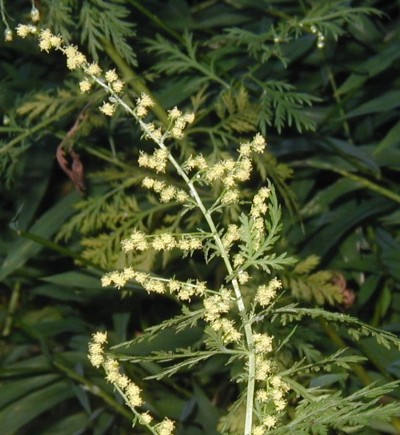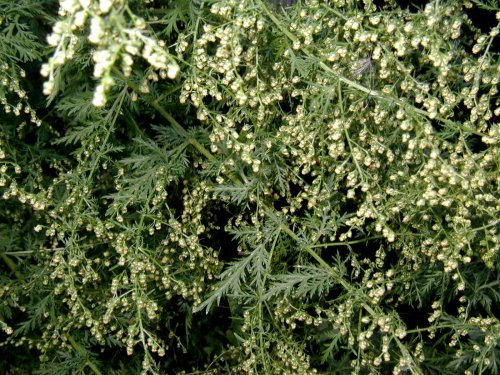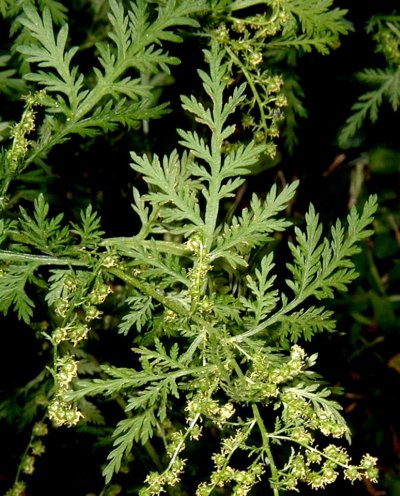Until I started reading about Sweet Annie, the fragrant Artemisia annua, I did not know that one of my favorite scents came from a related plant.
White Sage, Artemisia ludoviciana, also known as Western Mugwort, is native to the western U.S.
Native Americans have used white sage for many, many moons in dances and rituals, and it’s still used today for “smudging”. Smudging is the practice of burning white sage or other botanicals to release smoke which is used to purify places and people.
If you’d like to try white sage as an incense, you can buy sage smudge sticks or loose white sage from Wandering Bull or Crazy Crow.
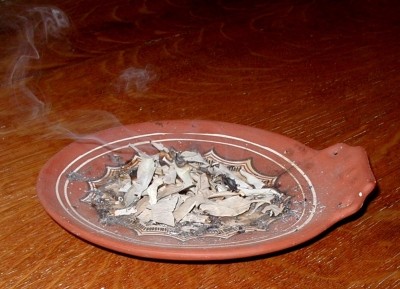
We burn white sage to purify the air and to enjoy its aroma as an incense.
Light a small handful of sage on a heat-resistant dish and walk around the house to purge the atmosphere of any lingering stale air. We find the scent very pleasing and not at all like the incense sticks available in retail shops.
Sage that you might put in your turkey dressing or poultry stuffing is not the same thing as White Sage. Even though culinary sage, Salvia officinalis, has a pleasing scent when crushed or used in cooking, it only seems to go with turkey or poultry. Does anyone use sage in the kitchen for anything else?
Sage is a lovely, perennial plant of the herb garden and there’s more to harvest each year than we would ever use. Too bad it doesn’t give off the pleasing aroma that White Sage does when it’s burned.
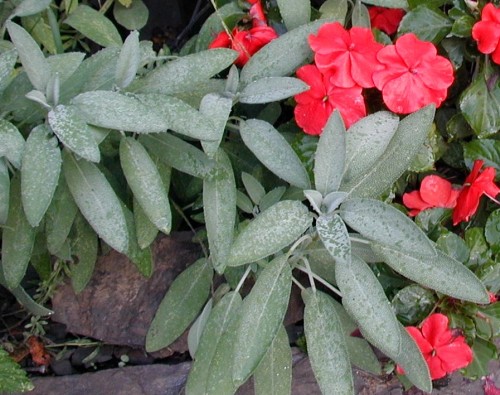
Sage in the herb garden grows 2-3 feet tall. Here, sage is next to a red impatiens.
Oval-shaped leaves of sage are heavily textured and appear “crinkley”. A white bloom is typically present and the opposite leaf pairs have long stems.

Textured leaf of culinary sage.
Sage would make a beautiful addition to an herb garden, along walkways, or used in place of other shrubbery. Ornamental varieties are available with variegated leaves and some beautifully colorful flowers. Check out the red-flowered sage Salvia greggii ‘Wild Thing’ from Spring Hill.
As you know Fall is a great time for planting perennials. See what you can find at this sale: Spring Hill Perennials – $25 Off $50. While you’re there search for “Wild Thing” to see the red-flowered sage.
